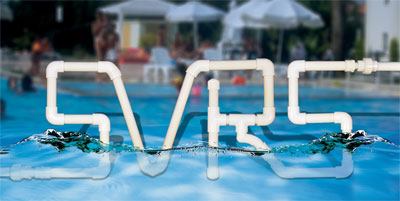Ultimately, SVRS’s and automatic pump shut-off devices rely on correct installation to function properly. Following are several considerations.
1 Remember that no check valves can be included on the suction side of the pump between the outlets and the SVRS, and only in limited instances on the return side of the pump. SVRS’s and automatic pump shut-offs are designed to cause air or pressure to move backward through the suction line; a check valve would prevent this occurrence and typically should be used only to divert water through a bypass line to the heater or chemical feeder. Some SVRS’s are not affected by check valves located between the SVRS and the pump.
“The main thing is when there’s a blockage and the pump is shut off, that the suction line is open to atmosphere in some way,” says Steve Barnes, safety and compliance manager for Pentair Water Pool and Spa, and chairman of the Association of Pool & Spa Professionals’ Technical Committee.
2 Builders should not install hydrostatic relief valves in the suction outlet sump because if an entrapment occurs and, coincidentally, there is a high water level below the pool, the hydrostatic relief valve could open, allowing enough water into the suction line that the SVRS would not activate.
“You need to have a secondary sump in the bottom of the pool, just to put in a hydrostatic relief valve that’s not connected to any of the other plumbing,” says Michael Giannamore, vice president of Aqua Pool & Patio Inc. in East Windsor, Conn.
Many manufacturers also specify a certain distance of straight pipe leading to the pump on the suction side because it helps smooth out turbulence at the vacuum-sensing pickup point, allowing for an enhanced ability to accurately monitor for pressure.
3 Consider calibration. Some manufacturers instruct builders and service technicians to undergo a calibration procedure immediately after installing the device. This allows certain SVRS models to recognize baseline pressure so they can detect a differential. In most cases, this should take place when the filter is clean because a dirty filter will add more pressure to the system, resulting in the SVRS being calibrated to a higher pressure. Also note that all units should be tested after installation.
Some SVRS’s must be recalibrated occasionally — many say annually. Additionally, certain models need to be recalibrated, and all retested, whenever a change is made that could alter the pressure in the circulation system, such as the installation of a new pump, filter or solar heating system, or the addition of a waterfeature.
